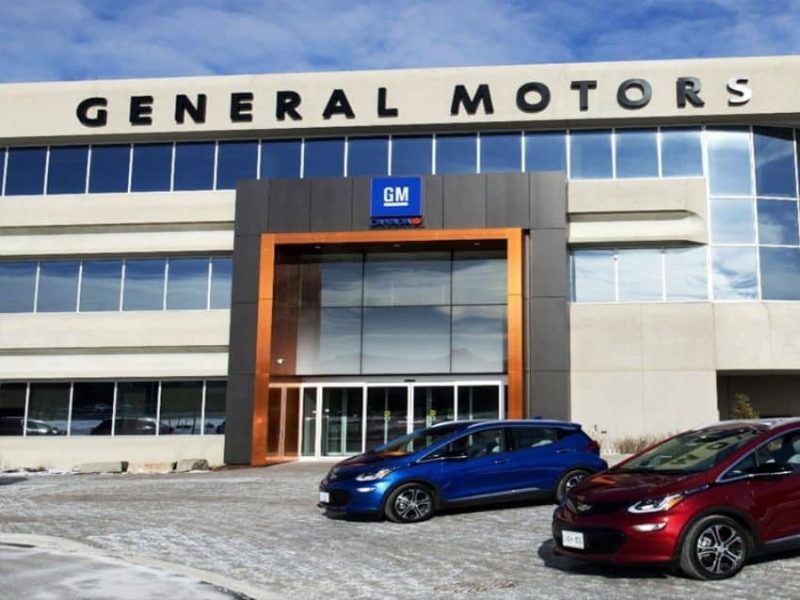General Motors (GM) has once again outperformed Wall Street’s expectations in its third-quarter earnings report, demonstrating the strength of its North American operations despite challenges in China.
The company reported it earned an adjusted profit $3.4 billion in the third quarter, up from $3.2 billion for the year ago period.
It reported adjusted earnings per share (EPS) of $2.96, well above the $2.43 expected, and revenue of $48.76 billion, surpassing forecasts of $44.59 billion.
The automaker also raised its guidance for 2024, forecasting full-year adjusted earnings before interest and taxes (EBIT) of between $14 billion and $15 billion, up from a previous range of $13 billion to $15 billion.
Adjusted automotive free cash flow was also increased to between $12.5 billion and $13.5 billion.
This marks the third time GM has raised its full-year forecast, signalling confidence in its future performance.
GM CFO Paul Jacobson highlighted the company’s ability to maintain strong pricing even as other automakers have struggled with falling demand for higher-priced vehicles.
“The consumer has held up remarkably well for us,” he said.
“Nothing that we’ve seen has changed from where we’ve been the last several quarters.”
North America drives GM’s success
GM’s North American operations were a key driver of its third-quarter success, contributing nearly $4 billion in adjusted earnings before interest and taxes, a 12.9% increase compared to the same period last year.
This performance was fuelled by strong pricing, with the company’s average transaction price in North America reaching nearly $50,000 per vehicle—an increase over the previous year.
Mary T Barra, CEO of GM, said,
“In the third quarter, we grew US retail market share with above-average pricing, well-managed inventories and below-average incentives.
While US sales volumes dropped slightly, with a 2.2% decrease overall, sales to individual buyers—a more profitable segment—rose by 3%.
The ability to sell vehicles at higher prices, particularly large SUVs and pickup trucks, has been a boon for GM as it navigates an increasingly competitive market.
Jacobson pointed out that fleet sales, which tend to have lower profit margins, accounted for most of the sales decline.
Strategic recalibration to cope with struggles in China
In contrast, GM’s international markets, particularly China, continue to present challenges.
The automaker posted a $137 million loss in China, a sharp decline from the $192 million profit it earned there in the same period last year.
This comes as GM contends with stiff competition from Chinese automakers and shifting market dynamics, resulting in a 37% drop in sales volume to 372,000 vehicles in the quarter.
China was once GM’s largest market, but the third-quarter results reflect the difficulty the automaker faces in maintaining its foothold there.
The company’s sales in China now represent just over half of its US sales volume.
However, the performance was better sequentially, with Jacobson adding that sales improved in the country from the second quarter, and dealer inventory fell sharply.
According to analysts, why China’s struggles were unable to strike a significant blow to GM’s earnings was due to a recalibration of its strategy there.
Craig Trudell, Bloomberg’s global automotive editor said that the automaker aims to move away from competing in the highly competitive middle market and focus on higher-end segments where it sees more potential for profitability.
“One bright spot for GM in China is its low-priced Wuling vehicles, which continue to perform well in the market,” he said.
GM’s electric vehicle (EV) ambitions ramp up and losses shrink
While GM faces headwinds in China, its EV strategy is gaining traction. Barra said the company is working to make EVs profitable on an EBIT basis “as quickly as possible”.
“We remain on track to reach our 2024 EV production and profitability targets. This is a function of our investments in a dedicated EV platform, US battery cell manufacturing and flexible assembly capacity. Most of our competitors lack these advantages. And no one can match the depth and breadth of our strategic EV portfolio.”
For several years, GM has been working on building its dedicated electric vehicle and battery platform, known as Ultium.
However, the initiative has encountered some bumps along the way. Recently, GM brought in a former Tesla executive to oversee its EV operations, a move that signals a renewed focus on getting its EV production right.
The company is now ramping up EV product activity significantly, with 2025 expected to be a pivotal year.
Jacobson mentioned that losses in GM’s EV segment have started to shrink, suggesting that the automaker’s investment in electric mobility may begin paying off.
This is a crucial development as the industry continues its shift toward electric vehicles, and GM’s ability to compete effectively in this space will be critical to its long-term success.
The post GM raises guidance for third time after beating Q3 estimates—what’s driving the success? appeared first on Invezz


